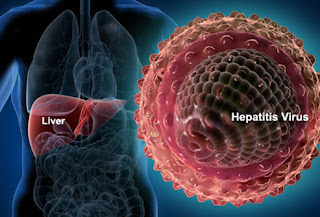Treatment of Diabetic Nephropathy
The first
step in treating diabetic nephropathy is treating diabetes and, if necessary,
treatment of high blood pressure (hypertension). With your good blood sugar and
hypertension management, you can prevent or delay renal dysfunction and other
complications.
Drugs Diabetic Nephropathy
In the early
stages of the disease, medication may be needed to:
• Control of
high blood pressure. Drugs called angiotensin converting enzyme inhibitors
(ACE) and angiotensin II receptor blockers (ARBs) are used to treat high blood
pressure. Use of both drugs is not recommended because of the side effects that
will arise. The results showed that blood pressure target was 140/90 millimeter
mercury (mm Hg) or less.
• Management
of blood sugar levels. Some medications have been shown to help control high
blood sugar in people with diabetic nephropathy. The average target of
hemoglobin A1C (HbA1C) is less than 7 percent.
• Lower high
cholesterol. Cholesterol-lowering drugs called statins are used to treat high
cholesterol and reduce protein in the urine.
• Improve
bone health. Medications that help manage your calcium phosphate balance are
important in maintaining bone health.
• Control of
protein in urine. Drugs can often reduce the levels of protein albumin in the
urine and improve kidney function.
Your doctor
will recommend regular follow-up tests to see if your kidney disease remains
stable or continues.
Treatment for advanced Diabetic Nephropathy disease
If your
illness progresses to kidney failure (end-stage renal disease), your doctor
will help you switch to a treatment focused on replacing your kidney function,
with options including:
• Kidney
dialysis This treatment is a way to get rid of toxic substances and dirt, and
extra fluid from your blood. The two main types of dialysis are hemodialysis
and peritoneal dialysis. The first method is more common and requires that you
visit a dialysis center and connect to an artificial kidney machine about three
times a week. Each session takes three to five hours. The second method can be
done at home, but it requires compliance and discipline in the patient.
•
Transplantation. In some situations, the best option is kidney transplant or
kidney-pancreatic transplant. If you and your doctor decide on a transplant,
you will be evaluated to determine if you are eligible for this surgery.
• Symptom
management. If you choose not to have dialysis or kidney transplantation, your
life expectancy is usually only a few months. You may receive treatment to help
you stay comfortable.
Potential treatment of future Diabetic Nephropathy
In the
future, people with diabetes nephropathy can benefit from the treatment being
developed by using regenerative medicine. This technique can help restore or
slow down kidney damage due to this disease. For example, some researchers
think that if a person's diabetes can be cured with future treatment such as
pancreatic pancreatic cell transplantation or stem cell therapy, then renal
function may improve.
In addition,
studies on stem cells and some new drugs for Diabetic Nephropathy are being
developed.
Lifestyle and treatment of Diabetic Nephropathy at home
• Lifestyle
behavior can support treatment. Active in physical activity every day of the week,
with at least 30 minutes of physical activity every day of the week.
• Adjust
your diet. Talk with a dietitian about limiting salt intake, choosing foods
that have lower potassium levels and limit the amount of protein you eat.
• Quit smoking. If you are a smoker,
talk to your doctor about strategies to quit smoking.
• Maintain a
healthy weight. If you need to lose weight, talk to your doctor about weight
loss strategies. Often this involves an increase in daily physical activity and
reduced calories.
• Take
aspirin every day. Talk to your doctor about whether low-dose aspirin every day
is useful to you.
Support Against Diabetic Nephropathy Patients
If you are
susceptible to diabetic nephropathy, here are some steps that may help you to
overcome it:
• Connect
with others who have diabetes and kidney disease. Ask your doctor about support
groups in your area
• Maintain
your normal routine, whenever possible. Try to keep the normal routine, do the
activities you enjoy and continue to work, if conditions are possible. This can
help you cope with the sadness or loss you may experience after a diagnosis of
the disease.
• Talk to
someone you trust. Living with diabetic kidney disease can create stress, and
by telling stories, can help your feelings. You may have friends or family
members who are good listeners. Or you may find it helpful to talk to a faith
leader or someone you trust. Consider asking a doctor's referral to a social
worker or counselor.
Prevention of Diabetic Nephropathy
To reduce
the risk of kidney disease diabetes:
• Control
diabetes. With effective diabetes treatment, you can prevent or delay diabetic
kidney disease.
• Control of
high blood pressure or other medical conditions. If you have high blood
pressure or other conditions that increase your risk of kidney disease, go to
your doctor. Ask your doctor about the examination to look for signs of kidney
damage.
• Follow the
instructions on over-the-counter medications. For people with diabetic kidney
disease, taking this type of painkiller can cause kidney damage.
• Maintain a
healthy weight. If you have a healthy weight, try to keep it physically active
every day of the week. If you need to lose weight, talk to your doctor about
weight loss strategies. Often this involves an increase in daily physical
activity and reduced calories.
• Avoid
smoking. Smoking can damage your kidneys and make your kidney damage worse. If
you are a smoker, talk to your doctor about smoking cessation strategies.
Counseling and treatment can help you quit smoking.








